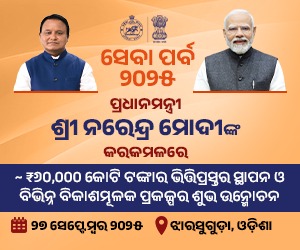The government is mulling the introduction of a ‘cash tax’. The new tax will be levied on withdrawal of cash from ATMs and banks, maybe after a certain limit. The new measure may kick in April 1 and the finance minister is likely to make an announcement to this effect in his budget speech February 1.
‘Cash tax’ may be one of the many steps under consideration of the government to disincentivise cash transaction in the country.
God forbid, if such a thing comes in, it would be another red letter day for people in the country after demonetisation. The UPA II government had toyed with a similar idea towards the end of its second term, but dropped it.
India, with more than three quarters of its people living in rural and semi-urban areas, is eminently unsuitable for a cashless economy as is being pushed by the BJP-led government at the Centre. Forget the lack of infrastructure, people here are not culturally attuned to an economic life without currency.
Besides, physical bottlenecks such as lack of roads, electricity, access to the internet, computers and smartphones, there are many other intangibles that hold people back from switching to a cashless economy.
In countries such as Belgium, France and Canada, more than 90 per cent of economic transactions are settled with digital payments. However, globally, about 85 per cent of transactions are cash-driven. According to data available with us, more than 90 per cent of economic transactions in our country are conducted with cash.
India’s dependence on cash is reflected in the fact that the cash-to-GDP ratio in our country in 2015 was at 12 per cent, much higher than in countries such as Brazil (3.9 per cent), Mexico (5.3 per cent) and South Africa (3.7 per cent).
Besides factors such as language and digital illiteracy, a combination of extant ills such as last-mile infrastructure gaps, poor delivery of data connectivity and high cost of broadband connectivity keep a substantial chunk of the out population deprived of access to data services.
India is far from being able to accommodate execution of the millions of digital transactions envisioned once the country goes cashless. The second challenge is that there are large numbers in the country, in the rural areas, in the informal economy and among the poor, who are completely outside even the digital economy that exists.
For them, arriving at a less-cash world requires crossing the hurdles to entering the digital economy.
According to figures from the International Telecommunication Union (ITU), the percentage of internet users in India (relative to population) has gone up from a negligible 27 per cent in 2015 to 34.8 per cent in 2016. However, the latter figure compares rather poorly with 50.3 per cent in China, 89.9 per cent in South Korea and 74.5 per cent in the United States.
The low level of connectivity in India is corroborated by a 2014 survey from India’s official National Sample Survey which found that the proportion of Indian households in which at least one member had access to the internet was 16.1 per cent in rural areas, 48.7 per cent in urban areas and 26.7 per cent in rural and urban areas combined. This is far short of the near universal connectivity envisaged by the government’s cashless society.
Despite, all the talk about India’s success in Information Technology, digital literacy in the country is awfully low. Here India is at a disadvantage. The process of laying out fixed-line infrastructure is slow, especially in situations wherein the governments are unwilling to mobilise adequate resources to finance investments that speed up the process.
The thickening uncertainty in the telecom policy space makes private sector investments a sluggish affair. High data prices and uneven penetration of service coverage work as stumbling blocks in even semi-urban and urban areas. The sudden spurt in the rise of data services in the country is due to free services by Reliance Jio.
Once the free services period goes, the percentage of Internet users will definitely come down. The basic necessity to sustain a high data using customer base is spread of education and low cost gadgets. Unless these conditions are met, trying to achieve a cashless economy will elude us.

